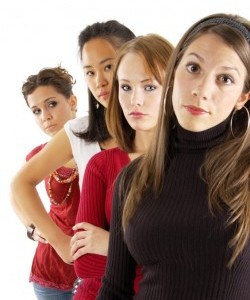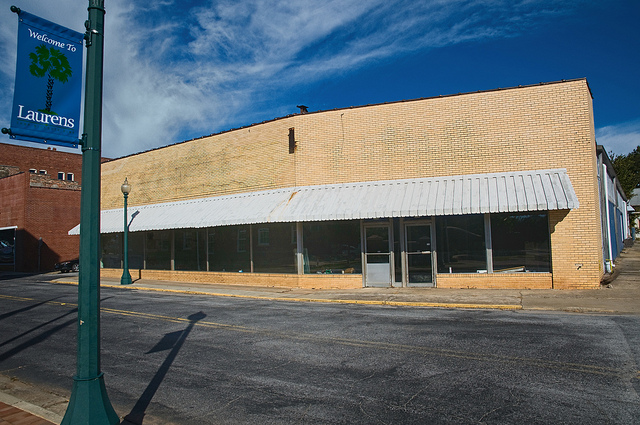 So you effed up our planet, huh?“Generation Hot” is the 2 billion or so young people who will be stuck dealing with global warming and weirding for their entire lives — and who have to figure out how to do it sanely and humanely. In his new book Hot: Living Through the Next Fifty Years on Earth, journalist (and Grist contributor) Mark Hertsgaard puts the official start of Generation Hot at June 23, 1988, when climate scientist James Hansen first testified to Congress about climate change and The New York Times put the story on its front page.
So you effed up our planet, huh?“Generation Hot” is the 2 billion or so young people who will be stuck dealing with global warming and weirding for their entire lives — and who have to figure out how to do it sanely and humanely. In his new book Hot: Living Through the Next Fifty Years on Earth, journalist (and Grist contributor) Mark Hertsgaard puts the official start of Generation Hot at June 23, 1988, when climate scientist James Hansen first testified to Congress about climate change and The New York Times put the story on its front page.
“My daughter and the rest of Generation Hot have been given a life sentence for a crime they didn’t commit,” Hertsgaard writes in a piece in The Nation adapted from his book. Even if we manage to ditch fossil fuels over the next 25 years, “the reality is that we’re locked in to at least 50 more years of rising temperatures and the harsher climate impacts they bring. Thus the young people of Generation Hot are condemned to spend the rest of their lives coping with a climate that will be hotter and more volatile than ever before in our civilization’s history.”
Hertsgaard has been reporting about climate change for 20 years, but it wasn’t until 2005, when his daughter was born and he began to realize what kind of world she would be growing up in, that he became, as he puts it, “deeply angry.”
 He plans to channel some of that anger into guerilla-style protests against the “climate cranks” in Congress, corporations, and the media who have denied the problem and blocked the solutions. The week of Jan. 31, Hertsgaard and some of the members of Generation Hot will confront climate cranks on camera in Washington, D.C. (If you’ve got nominations, leave them in comments below or on the Generation Hot Facebook page.)
He plans to channel some of that anger into guerilla-style protests against the “climate cranks” in Congress, corporations, and the media who have denied the problem and blocked the solutions. The week of Jan. 31, Hertsgaard and some of the members of Generation Hot will confront climate cranks on camera in Washington, D.C. (If you’ve got nominations, leave them in comments below or on the Generation Hot Facebook page.)
But Hot is not primarily an angry book; at times, it’s cautiously hopeful. Hertsgaard traveled around the country and the world to see climate threats but also climate solutions. He highlights real things communities can do to protect themselves from climate impacts, and real communities that are already doing them — from the Dutch who are planning 200 years ahead to protect their country from rising seas, to West African farmers who are adopting new growing methods, to Seattle leaders working to make the city more resilient. He introduces us to scientists, politicians, business leaders, and, most memorably, kids and young adults who will have to live through decades of climate chaos.
Here’s one striking episode from a visit to a village in Bangladesh, where Hertsgaard talked to a young man who wanted to practice his English and ask some tough questions:
“Please, sir, I would like to ask you about climate change. I have learned in school that carbon dioxide is collecting in the atmosphere and this is causing the earth to get hotter. Is it true?”
“Yes, that’s what scientists say,” I replied.
He nodded. “And I have learned that rich countries have put these gases into the atmosphere. Is it true?”
“Mostly,” I said. “But now China and India are releasing many of these gases as well.”
He nodded again. “I have learned that this CO2 will make the ocean rise and cover the south of Bangladesh with water. This village too will be covered with water. Is it true?”
Looking into the young man’s beseeching eyes, I hesitated to tell the truth but could not tell a lie. “I’m afraid that could happen someday, yes. The scientists aren’t certain, but they believe it could happen.”
“That is a big problem, sir,” he replied. “Please, sir, how do we solve this problem?”
Hertsgaard doesn’t have the whole answer. No one does. But Hot is a start.
Watch a replay of a Grist chat with author Mark Hertsgaard about his book.
And if you’re a Seattleite, come to a Town Hall Seattle event on Thursday, Feb. 3, to hear Hertsgaard talk about the book; I’ll be interviewing him on stage.



